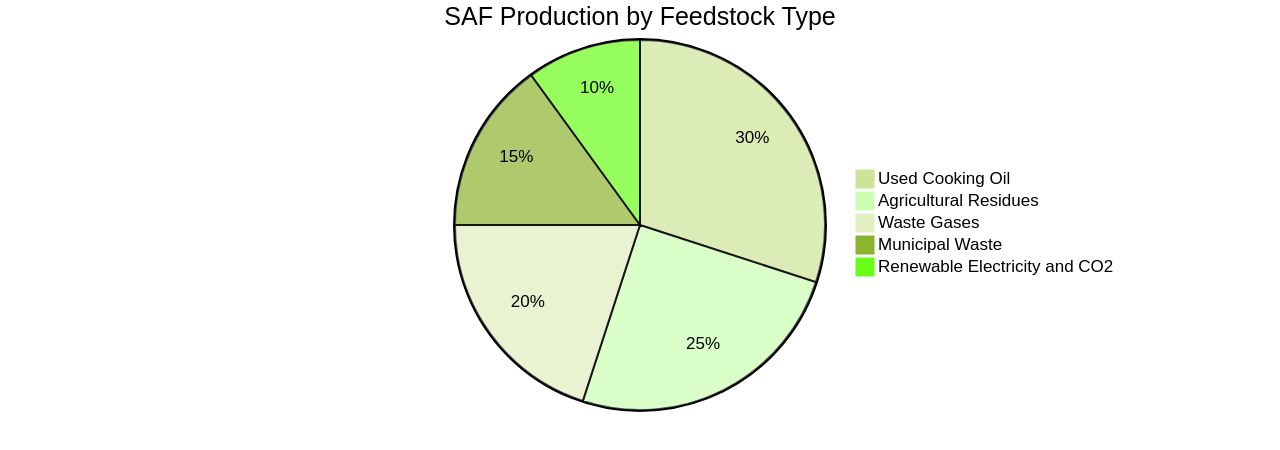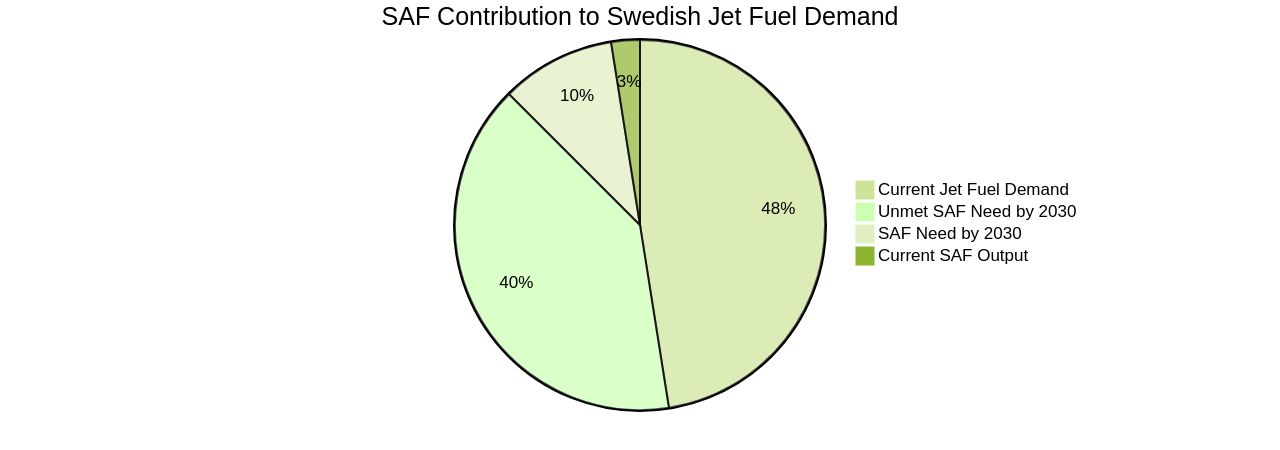Introduction
Sustainable Aviation Fuel (SAF) is a crucial element in the aviation industry's mission to reduce its carbon footprint. However, the production of SAF is still not meeting industry demand, and the cost of SAF poses a challenge. In this article, we will explore how innovative technologies, such as Unifuel.tech's flexiforming technology, are overcoming these barriers and accelerating the adoption of SAF.
We will also delve into case studies that showcase the successful utilization of SAF in trans-Atlantic flights and the repurposing of industrial facilities for SAF production. Additionally, we will discuss the economic impact of repurposing existing manufacturing facilities, geospatial variables affecting the economic impact, and the importance of feedstock and feedstock composition in SAF production. Join us as we dive into the technical insights and analysis of the renewable fuels industry's journey towards a greener future in aviation.
Background: Sustainable Aviation Fuel (SAF) and its Importance
Sustainable aviation fuel (SAF) is a pivotal element in the aviation sector's strategy to reduce its carbon footprint, given that aviation accounts for around 2% of global carbon emissions. With the urgency to decarbonize aviation, SAF emerges as the immediate solution for reducing emissions, particularly for long-haul flights where alternative technologies such as electrification are not yet viable. Despite the potential, the production of SAF is still not meeting industry demand, contributing only 0.2% to the global jet fuel supply in 2022.
The cost of SAF also poses a challenge, being significantly higher than conventional jet fuel, alongside integration complexities with current fuel systems. Innovative technologies are key to overcoming these barriers and accelerating the adoption of SAF. The flexiforming technology by Universal Fuel Technologies, marketed under the brand Unifuel.tech, is one such breakthrough.
It offers a customizable approach to decarbonization, allowing operators to adapt the technology at their desired pace. Flexiforming can be integrated into idle hydrotreaters or reformers, optimizing capital outlay and reducing carbon intensity. This responsiveness is further enhanced by Unifuel.tech's commitment to providing quick feedback, typically within 24 hours of inquiry, regarding the feasibility of flexiforming for specific feeds, target products, and existing infrastructure.
The successful utilization of 100% SAF in a trans-Atlantic flight signifies the potential of SAF as a 'drop-in' solution, compatible with current aircraft and requiring minimal changes to the infrastructure. The integration of bio-based aromatics into SAF blends has also expanded the possibility of higher SAF blend ratios, overcoming the previous 50% blend limitation. With the flexiforming technology from Unifuel.tech, the aviation industry is now better equipped to navigate the complexities of decarbonization and contribute to meeting the International Civil Aviation Organization's net-zero carbon emissions target by 2050.

Barriers to SAF Production and the Role of Repurposing Industrial Facilities
As the aviation industry intensifies its decarbonization efforts, the production of Sustainable Aviation Fuel (SAF) has become a critical focus. While Saf's current cost is substantially higher than conventional jet fuel, and availability remains limited, innovative solutions are emerging to enhance scalability and supply. One notable approach involves retrofitting existing facilities for SAF production, thus leveraging current infrastructures and reducing new investment requirements.
In this context, Unifuel.tech's Flexiforming technology emerges as a significant advancement. Flexiforming allows operators to tailor their decarbonization pace by utilizing idle hydrotreaters or reformers. This adaptability can substantially decrease capital expenditures and the carbon intensity of the production process.
Unifuel.tech, a subsidiary of Universal Fuel Technologies, underscores their commitment to customer service with a promise to reply to inquiries within 24 hours, ensuring swift and efficient communication. By requiring details on feeds, target products, and facility specifics, they can ascertain the most effective application of Flexiforming technology for each operator. This technological innovation aligns with the International Civil Aviation Organization's goal of net-zero carbon emissions by 2050.
It supports the industry's trajectory towards increased SAF production, necessitating ongoing collaboration and innovation within the SAF value chain. The Flexiforming technology by Unifuel. Tech is an example of the type of strategic solutions required to meet the ambitious targets set for global aviation decarbonization.

Methodology for Quantifying the Impact of Repurposing Existing Manufacturing Facilities: Case Study Using Pulp and Paper Facilities for SAF Production
The global aviation sector is increasingly focusing on Sustainable Aviation Fuel (SAF) to meet its decarbonization goals, as seen in the Swedish initiative to produce 80,000 tons of SAF annually. This project utilizes carbon capture usage (CCU) and the synthesis of electrofuel, leveraging the country's clean electricity grid. As the industry strives to reduce its carbon footprint, technologies such as Unifuel.tech's flexiforming offer a scalable solution to accelerate the transition to SAF.
Flexiforming allows for the adaptation of existing infrastructure, such as idle hydrotreaters or reformers, to produce SAF, thereby reducing both capital expenditure and carbon intensity. This innovative approach can be customized to an operator's specific needs, taking into account their available feeds, desired products, and the capabilities of their current facilities. Unifuel.tech, developed by Universal Fuel Technologies, offers operators the flexibility to set their decarbonization pace, with a commitment to providing swift responses to inquiries within 24 hours.
The integration of flexiforming into the SAF production process represents a significant stride towards the aviation industry's net-zero emissions target by 2050, balancing economic growth and environmental sustainability. It also addresses the existing gap between SAF offtake agreements and production capacity, underscoring the importance of policy support and the development of green electricity sources for the production of PtL fuels. With the potential to create jobs and revitalize the economy, the adoption of flexiforming technology by SAF producers can be a pivotal step in the aviation sector's journey towards a greener future.

Case Study: Wood-based Alcohol-to-Jet Process for SAF Production
Sustainable Aviation Fuel (SAF) represents a transformative leap in the aviation industry's efforts to reduce its carbon footprint. By harnessing the BioForming process, which ingeniously converts sugars to aromatics (S2A), the industry is poised to significantly lower lifecycle greenhouse gas (GHG) emissions.
This process is versatile, converting a plethora of plant sugars—beet sugar, sugar cane, corn starch, and more—into bio-based aromatics, which are crucial for meeting the ASTM international standards for jet fuel. The recent milestone achieved by Virgin Atlantic's 100% SAF trans-Atlantic flight marks a pivotal moment, demonstrating the technical feasibility of using SAF without any modifications to aircraft engines.
The BioForming technology is not only a beacon for environmental sustainability but also a testament to the adaptability of SAF production methods, which can utilize a diverse array of feedstocks, thereby reducing dependence on any single resource. A significant advantage of SAF is its 'drop-in' capability, allowing for seamless integration into the existing fueling infrastructure and aircraft fleets. This innovation could potentially meet 20% of Sweden's SAF requirements by 2030, highlighting the scale at which SAF can contribute to the industry's net-zero carbon emissions goal. Furthermore, with the integration of advanced technologies like high-temperature heat pumps, emissions could be further curtailed, illustrating the multifaceted approach required to tackle aviation's environmental challenges.
Economic Impact of Repurposing Industrial Facilities for SAF Production
A pivotal economic evaluation highlighted the strategic repurposing of pulp and paper facilities for alternative jet fuel (AJF) production. This approach promises significant cost benefits over constructing new infrastructure. Detailed analysis of capital investment and operational expenses against revenue prospects underscores the financial viability of such conversions for sustainable aviation fuel (SAF) production.
Transitioning to SAF is critical for the aviation sector, a significant CO2 emitter, with global targets set by the International Civil Aviation Organization to reach net-zero emissions by 2050. Sweden's initiative, aiming to produce 80,000 tons of SAF annually by 2030, will fulfill 20% of its SAF needs while contributing to a 5% reduction in the nation's total jet fuel demand. The Power-to-Liquid (PtL) process, though still in nascent stages, promises CO2 emission reductions of 89 to 94%.
However, the current SAF supply falls short, facing challenges such as the need for large-scale production and the creation of new business models within the SAF value chain. Despite these obstacles, the persistent demand-gap for SAF presents profitable opportunities for timely market entrants. The collaborative efforts are essential to overcome the daunting scale of ramping up SAF production, with international and capital-intensive undertakings requiring industry-wide participation.
In South Australia, government and industry collaboration is fostering a knowledge-based, resilient, and greener economy, targeting sectors such as renewable energy and green hydrogen, where the state holds a competitive edge. Globally, Asia-Pacific leads in SAF feedstock availability, with initiatives to enhance raw material pretreatment for diverse inputs. The urgency for decarbonization is palpable, with industry leaders like Neste sourcing waste materials and airlines like ANA acknowledging the necessity to meet environmental regulations or face operational constraints.
In the U.S., the Biden administration's ambitious goal for SAF production by 2050 highlights the need for innovative production methods, acknowledging the trade-offs and environmental considerations inherent in the diverse potential fuel sources. Unifuel.tech's flexiforming technology emerges as a key innovation, offering a customizable approach to SAF production. By retrofitting existing idle hydrotreaters or reformers, flexiforming technology allows for a more economical transition to SAF, reducing both capital expenditure and carbon intensity.
This approach aligns with the economic evaluation suggesting repurposing infrastructure for AJF production, and provides a rapid response to inquiries, ensuring that operators can swiftly adapt to the evolving SAF market. The technology's ability to integrate with current facilities underscores its potential to address the large-scale production challenges and contribute to closing the demand-gap for SAF. Unifuel.tech's model exemplifies the industry's shift towards flexible, cost-effective solutions in the pursuit of decarbonization, offering operators the opportunity to calibrate their pace of transition towards greener fuel alternatives.
Geospatial Variables Affecting the Economic Impact
As the aviation industry endeavors to fulfill its commitment to net-zero emissions by 2050, the production of Sustainable Aviation Fuel (SAF) is critical. However, economic factors and regional feasibility present significant challenges in this transition. The cost of SAF production remains a considerable obstacle, with current prices being three to four times higher than those of conventional jet fuel.
This is largely attributed to the early stage of SAF technology development, with limited producers worldwide. Despite these challenges, the industry is making strides, exemplified by Airbus' efforts to ensure its aircraft are fully SAF-compatible by 2030 and its collaboration to widen the SAF market. The anticipated LanzaJet's Freedom Pines Fuels facility signifies a substantial advancement in the SAF industry, potentially generating numerous jobs and catalyzing further economic growth.
Nonetheless, even with policy reforms, the predicted SAF supply is estimated to meet only 35% of the global jet fuel demand by 2050. Moreover, Power-to-liquids (PtL) fuels, which offer significant emission reductions, face scalability issues and the requirement for green electricity, which may be scarce in future decades. To overcome these barriers, the industry must adopt a multi-pronged strategy, including policy changes and collective industry efforts.
A promising development in this area is the introduction of flexiforming technology by Unifuel.tech, which offers a flexible approach to decarbonization. This technology can be integrated into existing facilities, such as idle hydrotreaters or reformers, which may reduce the capital expenditure and carbon intensity associated with SAF production. Unifuel.tech's responsive communication model, promising a 24-hour response time, and their collaborative approach to finding optimal applications for flexiforming, demonstrate the potential for innovative solutions to accelerate the SAF market's growth and mitigate current supply limitations.
Impact of Feedstock, Feedstock Composition, and Industrial Natural Gas Price
The strategic selection and composition of feedstocks are fundamental to the economic viability of producing sustainable aviation fuel (SAF). A notable example is Australia, where nearly five billion liters of SAF could be produced by 2025 using locally sourced agricultural waste and residue.
The use of industrial natural gas in the ATAJ process is another critical factor influencing the economics of converting existing industrial facilities to SAF production. With aviation accounting for 2-3% of global CO2 emissions and the industry's path to decarbonization proving complex, the urgency for sustainable solutions is paramount.
Currently, SAF is capped at a 50% blend with traditional jet fuel, but progress towards 100% SAF usage is on the horizon with ongoing trials and technological advancements. Meeting international standards is essential for global SAF market access, underscoring the need for strategic feedstock development, efficient processing facility clusters, and the integration of renewable energy within these operations.
The shift towards SAF is a move towards not only reducing emissions but also driving innovation and sustainability. Unifuel.tech's Flexiforming technology offers an innovative solution that enables operators to tailor their decarbonization efforts.
This technology can be integrated into dormant hydrotreaters or reformers, effectively lowering capital costs and carbon intensity. Unifuel. Tech requires information on the operator's feedstock, desired products, and current facilities, promising a swift 24-hour response to optimize the Flexiforming application. The need to address these challenges is reflected in the industry's broader ambitions, with the International Civil Aviation Organization targeting net-zero carbon emissions by 2050. The SAF industry, while still nascent and facing hurdles such as limited supply and high costs, is poised for growth. With the potential for CO2 emission savings of 89 to 94% through PtL processes, and a growing recognition of SAF as a key tool for decarbonizing aviation, the future for SAF looks promising despite the current challenges.

Comparison of SAF Production Costs with Greenfield Facilities
Analysis of the economic feasibility for repurposing existing industrial infrastructures to produce Sustainable Aviation Fuel (SAF) reveals a cost-effective edge over constructing new facilities. An annual SAF output of 80,000 tons is projected to fulfill around 5% of Sweden's current jet fuel demand and 20% of its anticipated SAF requirements by 2030. Electrofuels, or synthetic aviation fuels, have shown a substantial decrease in CO2 emissions compared to conventional fossil fuels, although precise figures on reduction percentages are not yet available.
The aviation sector, contributing to 2-3% of global emissions, is recognizing SAF as a pivotal tool for decarbonization, aligning with the International Civil Aviation Organization's target of net-zero emissions by 2050. Unifuel.tech's Flexiforming technology emerges as a strategic innovation, enabling a gradual decarbonization pace. It can be integrated into dormant hydrotreaters or reformers, minimizing capital costs and carbon intensity.
Flexiforming offers customization by analyzing feedstock, desired products, and available infrastructure. Despite SAF's potential, its availability on a large scale is hindered by costs, being 3-4 times higher than kerosene. Currently, SAF comprises only a minor fraction of the millions of tons used by airlines.
Contributions from passengers at hubs like Amsterdam Airport Schiphol support the incremental integration of SAF into the fuel system. Industry leaders like Airbus and Emirates are taking proactive steps to ensure their fleets are 100% SAF-capable by 2030 and to expand the SAF market. However, to escalate SAF production, several barriers must be addressed, including technology readiness, capital-intensive industry nature, and the need for collaboration across the SAF value chain.
A collaborative platform is essential for fostering innovation and increasing SAF production and utilization globally. Unifuel.tech's approach to deploying Flexiforming facilitates such collaboration by providing a tailored pathway to decarbonization. By requesting specific details about an operator's feedstock, target products, and existing facilities, they offer a bespoke integration plan, responding within 24 hours to ensure rapid progress in SAF adoption.

Conclusion
In conclusion, the renewable fuels industry is making significant strides in the adoption of Sustainable Aviation Fuel (SAF) to reduce carbon emissions in the aviation sector. However, there are still barriers to overcome, such as limited production and high costs.
Innovative technologies like Unifuel.tech's flexiforming technology are playing a crucial role in accelerating the adoption of SAF by offering customizable solutions for decarbonization. Case studies have demonstrated the successful utilization of 100% SAF in trans-Atlantic flights and the repurposing of industrial facilities for SAF production.
These examples highlight SAF's compatibility with existing aircraft and infrastructure, minimizing the need for extensive modifications. The economic impact of repurposing existing manufacturing facilities for SAF production has been evaluated, showing cost benefits over constructing new infrastructure.
Unifuel.tech's flexiforming technology allows for a more economical transition to SAF by integrating with idle hydrotreaters or reformers, reducing capital expenditure and carbon intensity. Geospatial variables and feedstock composition also play a significant role in the economic impact of SAF production. Strategic selection and composition of feedstocks are essential for economic viability, while geospatial variables affect regional feasibility and supply chain optimization. Overall, the adoption of innovative technologies like Unifuel.tech's flexiforming is crucial for scaling up SAF production and meeting industry targets for net-zero carbon emissions by 2050. Collaboration across the SAF value chain, policy support, and investment in green electricity sources are necessary to overcome challenges and accelerate the transition towards a greener future in aviation.




